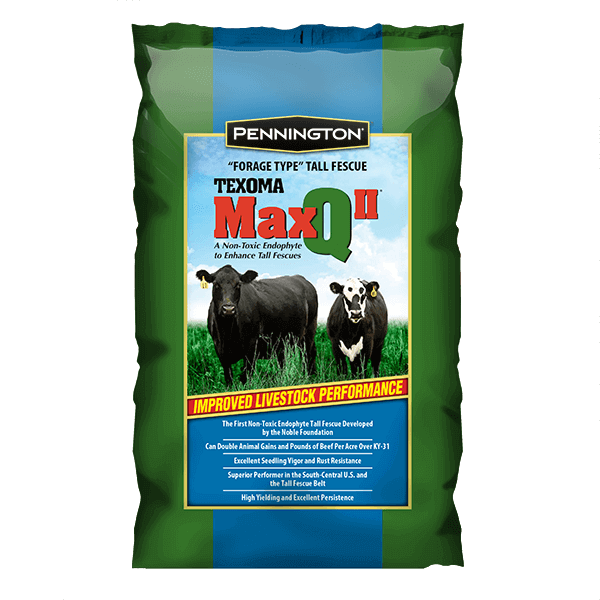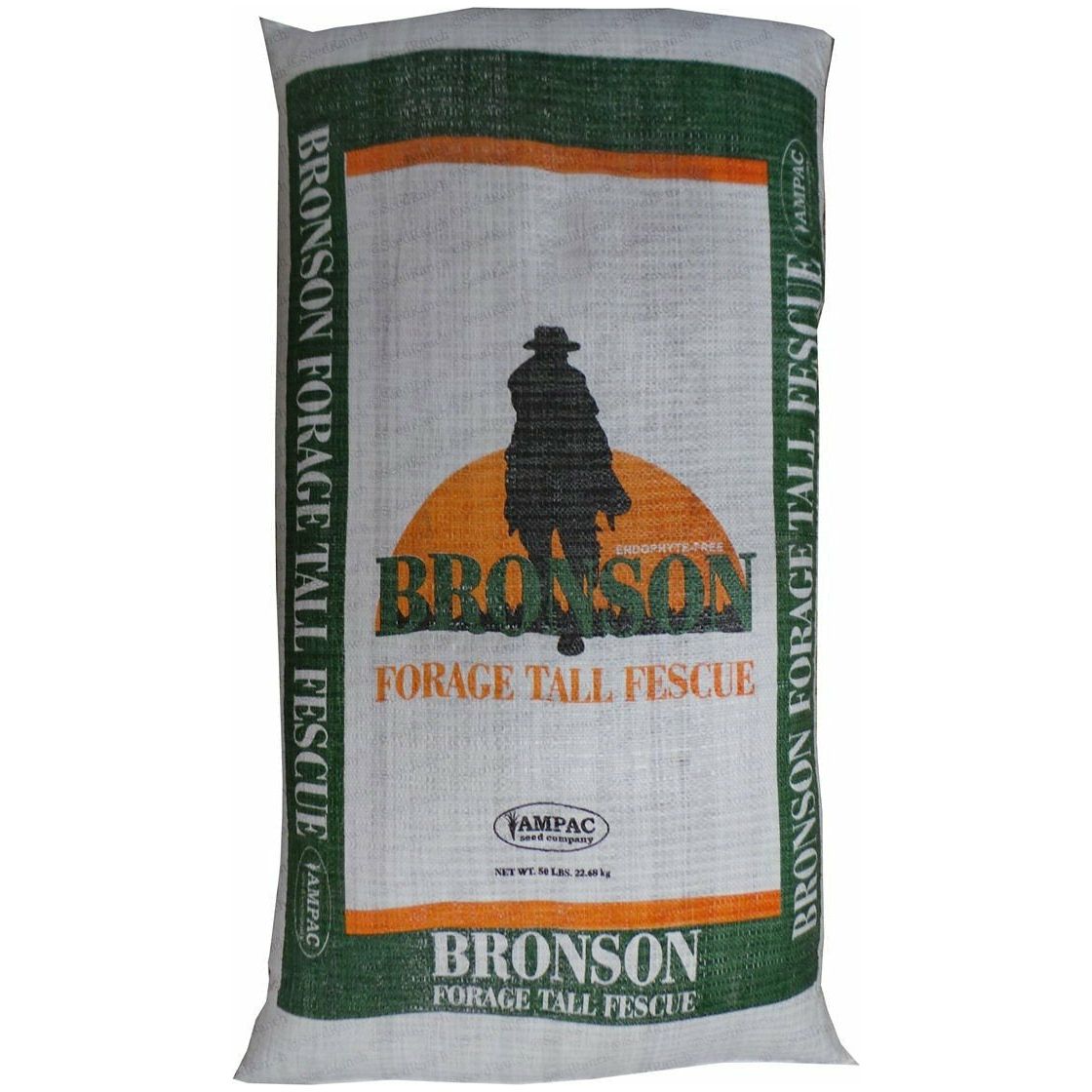Excellent
MaxQ Jesup Forage Tall Fescue Grass Seed - 25 lbs.
$117.77
Jesup MaxQ features advanced technology that combines a non-toxic endophyte (MaxQ) with a proven variety (Jesup) of tall fescue. Jesup MaxQ offers the plant persistence of toxic fescue varieties like Kentucky 31 but with no detrimental effects on animal performance and health.
University research and on-farm experience have shown cattle grazing Jesup MaxQ to have significantly greater gains, higher conception rates, and better overall health than those grazing toxic fescue varieties. It is proven safe for horses including pregnant mares and is widely adaptable throughout the traditional fescue growing areas of the U.S.
For best results and benefits, all toxic tall fescue should be killed before establishing MaxQ. A firm seedbed is important for good stand establishment. Seed can be drilled into a prepared, firm seedbed, no-tilled into killed sod with a no-till drill or surface broadcasted onto a prepared seed bed and packed in with a culti-packer.
Rate: 15- 20 lbs/acre in a prepared seedbed or 20-25 lbs/acre sod-seeded in stubble.
Depth: 1/4" to 1/2". Planting too deep can result in poor stand emergence.
Dates: Southern and Southeastern states: Sept.1 to Nov.1; Mid-South, Midwest and Northeastern states: Aug. 15 to Oct. 1 or spring planted in March and April.
Fertilization: Lime to a pH of 6.0-6.5. Apply phosphorus and potassium according to soil tests. Use 25-35 lbs./A starter nitrogen.
Management: Do not graze or cut seedling stand until it reaches 6"-8" tall. During the year after establishment, rest fescue pastures during the summer months. If weather conditions are favorable for growth, forage may be used for light rotational grazing for short periods or harvested for hay. Leave 3 - 4” of forage growth after grazing or haying. To prevent hoof pugging damage, do not graze when soil is excessively wet and soft.
For maximum productivity and stand life in grazed pastures, use a rotational grazing system. Apply N, P & K fertilizer annually as recommended by a soil test. Apply nitrogen in early fall and in late winter. Keep forage fresh and leafy by grazing or periodic clipping. Rotate cattle between pastures more often during periods of heat and drought stress. Forage may be stockpiled during periods of rapid growth in early fall and utilized for winter grazing. To prevent contamination, do not feed toxic fescue hay in MaxQ pastures.

MaxQ Jesup Forage Tall Fescue Grass Seed - 25 lbs.

I have yet to sow the seed (that will be in a month or so) but working with Seed World was super easy and their product arrived much quicker than I had anticipated. Assuming the new seed performs as expected, I will definitely purchase next year's product from Seed World again; without hesitation!

$5.95
Kentucky 32 Endophyte Free Tall Fescue Kentucky 32 is an amazing breed of low maintenance grass...

$135.00
MaxQ II Forage Type Tall Fescue Perennial Grass BENEFITS • Produces no toxins - proven safe...

$19.95
Bronson Endophyte Free Forage Fescue Bronson exhibits the toughness that you have come to expect...



